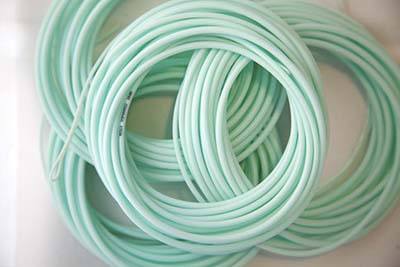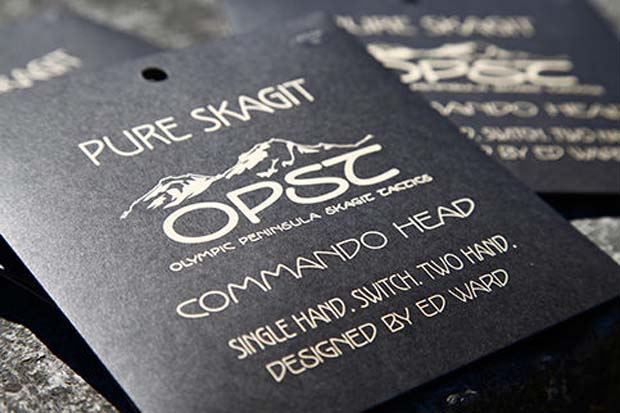Moving to North Georgia, I thought, would require a lot of new sticks. A quarter century in the salt of South Florida had established a collection of trout useless rods that started with 8s and ended at 14s. Those rod weights and all in between were sent to good homes throughout eBay world. However, I could not part with my ugly Sage Bass rod. Somehow, I knew it was destined to become all it could be but had not gotten there yet. Should I give it a new challenge?
Sage’s Bass rod is a “mutt” and as such is tough
This model Bass Rod is one of three original “Bass Series” rods made by Sage. The workhorse series is still in demand. Pictured is the 330gr model referred to in the story. Steve Kantner, The Land Captain, popular South Florida guide, author and national publications columnist once said, your mutt is more like a “Special Teams Stick.” Images provided by Zack Dalton, Far Bank Enterprises, Western Sales Manager.
My mutt had traveled with me on highways, byways and dirt roads of South Florida since new, and like a great canine companion never complained about anything I did with it.
I could pull it out of the back seat (halved), set up by a canal, pond or under a bridge and fish for largemouth bass, tarpon, snook, jacks, and more in under ten minutes. “Special Teams” and I always caught fish.
The rod has been repaired twice (tip did not like bridge abutments – $45 plus ship X 2 X 4 weeks each time). It truly looks old but still plays like a puppy – the untold story of buying expensive brand name rods. They have better fish on adventures and longer turn and lift biggin’ careers.
It had worn out a few RIO lines, with my Bass rod, made a backing change-out that probably did not need to be made and had fish on using furled, fluorocarbon and mono leaders – pre-tied and hand built.
How I made an ugly Sage Bass Rod into an $800 trout rod and lived to tell about it
I got the idea in my head that a short shooting head of about 20-feet (you can buy that length or DIY from an old line) would deliver line on my Bass Rod a lot better than the recommended 330-grain WF floating line (RIO). There was nothing really wrong with the 330 grain line performance. The line had just reached terminal old age.
Olympic Pacific Skagit Tactics

The fly line that changed fly fishing. OPST’s Saulk Blue colored Commando Head. Providing angling comfort to fly fishers of these religions: single hand, switch, and two hand – Ed Ward, itinerant preacher.
The long and short of my many fly line reconfigure experiments rested finally on the OPST lines, which have a functionality previously unheard of – putting them in A League of Their Own.
Does the Commando-Lazar combo portend one-rod size fits all? No, of course not, but they make the welcome tent a lot bigger
With my Sage Bass rod; using the short, fast tapering OPST Commando shooting head with 100-feet of Lazar running line, specific Polyleader or Versileader and mono leader, I now catch all of the game fish here in the southeast using my “Special Teams” Sage Bass Rod and OPST lines. You need to do this.
So in what way could OPST’s Commando Heads and SP Lazar lines be more important than easier to cast multiple ways, throw a mile with ease, be so inexpensive as to convert an old stick into playing again, and produce better fishing results across the board?
Well, that too is easy. Think teaching casting made easy – loading the rod. Young folks wanting to get into fly fishing are turned off by casting. Statistically, it accounts for more than 85% of the reason for rejection. Each loss is felt in retail, advocates for clean water, warriors for keeping public lands open to the public, and creating new outdoor enthusiasts who will some day VOTE. The OPST lines make learning casting easy – all because any newbie can EASILY feel the line load the rod. VIOLA, they get it.
[information]Original Sage Bass: 7-foot, 11-inches long; four sections, weight 3 5/8 ounces, recommended 330-grain weight fly lines, fast action, 6 1/2-inch full wells grip.
Sage Manufacturing
Bainbridge Island, WA 98110
Customer Service / 8:00am – 4:00pm PST.
Email: sagecs@sageflyfish.com
Phone: 877-263-6141
OPST line / Commando Head, 275 grain, 13.5 feet long / SP Lazar Running Line, 35-pound test, 100-feet.
Olympic Peninsular Skagit Tactics
12644 Interurban Avenue S
Building 3
Tukwila, WA
206-858-8476
info@opskagit.com


